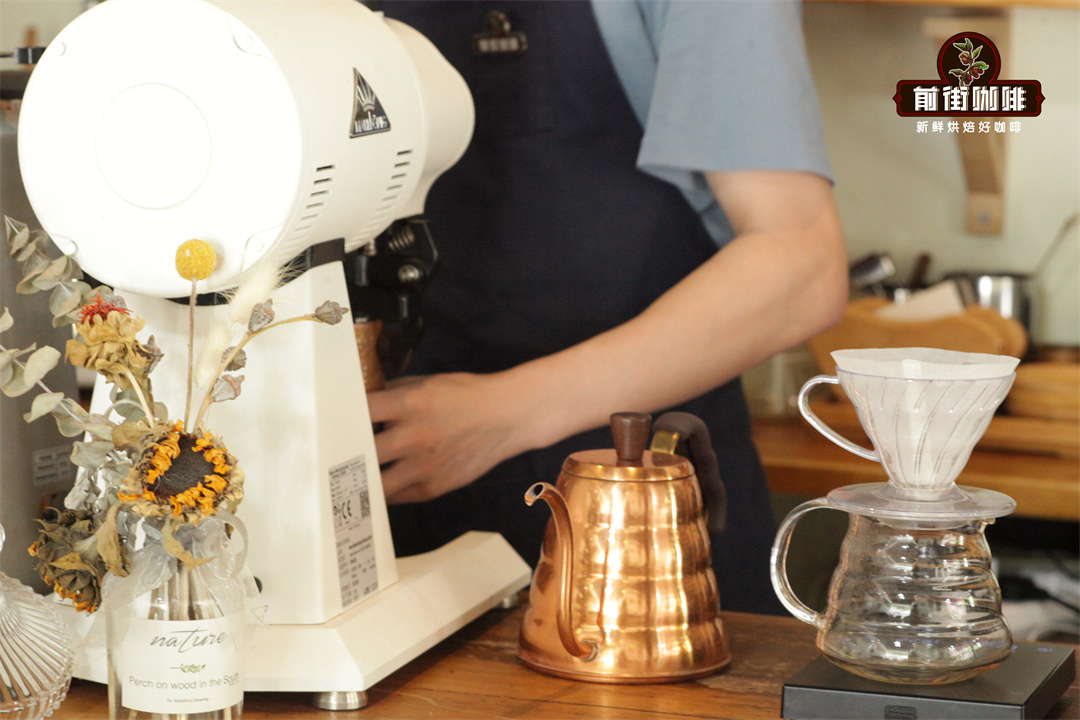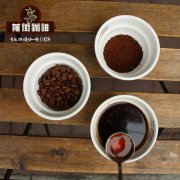A brief introduction to the difference between the flavor characteristics of Ethiopian coffee beans recommended by Huakui 6.0 and Yega Xuefei

Professional coffee knowledge exchange more coffee bean information please follow the coffee workshop (Wechat official account cafe_style)
Qianjie-Yejia Xuefei and Huakui flavor cooking sharing
Saifeng has unique natural conditions and is suitable for growing all imaginable varieties of coffee. As a upland crop, Ethiopian coffee beans are mainly grown in areas between 1100 and 2300 meters above sea level, roughly distributed in southern Ethiopia. Deep soil, well-drained soil, weakly acidic soil, red soil and soft loam soil are suitable for growing coffee beans because these soils are nutritious and humic.
The highlands of western Ethiopia have given birth to new varieties of coffee that are resistant to fruit disease or leaf rust. Ethiopia has many world-famous types of coffee. Some of the main types of coffee are famous for their unique aromas and flavors, including the following: Yega Chenfen Yirgachefe Harald Harar Sidamo Sidamo Dejima Djimma Rim Limu
Among them: Yega Xuefen, Sidamo, Lim producing areas are well known.
Yejia snow caffeine, mostly washed with water, but there are also a small number of excellent beans engraved in the sun to enhance the charming fruit aroma and mellow thickness. Coffee trees are mostly planted in farmers' own backyard or mixed with other crops in the field, the yield per household is not much, it is a typical rural coffee. These mountain villages are foggy, like spring all year round, with a gentle breeze in summer, cool but not hot, rain but not damp, and no cold damage in winter, giving birth to a unique flavor of citrus and flowers. Citrus, jasmine, tea, etc.
The Sidamo producing area is located in southern Ethiopia, extending to the districts of Arsi and Bale in the east and Gamogofa in the west. Sidamo coffee is cultivated at the altitude of 1400m-2000m. The industry here is dominated by agriculture, and the main growing area of coffee is around the Great Rift Valley (Great Rift Valley) of East Africa. The coffee flavor of Sidamo is very diverse, and the different soil types, microclimate and countless native coffee species make the coffee produced in each town have obvious differences and characteristics. Among them, Sidamo is most famous for its Sakuran.
Qianjie has many kinds of Ethiopian boutique coffee. Today, we will brew Yega and Sun Sidamo respectively with the same parameters to see the difference between their flavors.
Huakui
Country of ownership: Ethiopia
Origin: Guji Guji producing area, Hambella Wamena area, Dimtu Village, Buku able Manor.
Coffee bean seed: Heirloom (Ethiopian native bean seed)
Altitude: 2250-2350m
Treatment: insolation
Flavor: strawberry, jackfruit, passion fruit
Wash Yega Chuefei Tattado G1
Country: Ethiopia
Producing area: Yega Xuefei
Banko Dhadhato
Bean species: original ancient superior species of Heirloom
Altitude: 1800-2000m
Treatment: washing G1
Flavor: lemon white peach honey black tea
Washing and cooking parameters: water temperature 91 degrees, ratio of water to powder 1:15, grindness BG-6S,V60 filter cup, the first water injection 30g, steaming 30s, the second water injection 120g water cut off, when the water level drops, the powder bed will be exposed, the third water injection will be carried out to 225g water, the filter cup will be removed from the powder bed when the water level drops, the 5g water in the tail section is not needed, and the extraction time is about 2fret 00s.
Sun Sakui: rich aromas of flowers and fruits, strawberries and jackfruit, round and thick acidity in the mouth, obvious sweetness of brown sugar and long-lasting aftertaste.
Washed Yega: such as white tea with fresh sweetness, elegant jasmine green tea with peach and citrus sweetness, very fresh and pleasant
Knowledge expansion: Banko Dhadhato is located in a village in Godibe, a producing area southeast of Yega Sheffield. It is a cooperative organized by local coffee farmers in the Banco Tattado cooperative village and is organized by the YCFCU Cooperative Alliance.
END
Important Notice :
前街咖啡 FrontStreet Coffee has moved to new addredd:
FrontStreet Coffee Address: 315,Donghua East Road,GuangZhou
Tel:020 38364473
- Prev

Yejia Xuefei and Huakui 6.0 Coffee Bean Flavor difference between washing and tanning Coffee beans
Professional coffee knowledge exchange more coffee bean information please follow the coffee workshop (Wechat official account cafe_style) front street-the difference between Yejia Xuefei and Sakuran, do you know Sakuran brewing and sharing? Yega Xuefei is actually a small town, 700-2100 meters above sea level, but it is the generation of Ethiopian boutique coffee.
- Next

What is the most famous coffee in Panama? what does Panamanian rosy summer coffee taste like?
Professional coffee knowledge exchange more coffee bean information please follow the coffee workshop (Wechat official account cafe_style) front street-Panama red prospect coffee brewing sharing can be said to be a heavyweight in the boutique coffee market in Panama, because the rose summer coffee grown by major estates has won many championships in the world competition, so rose summer coffee has become the most famous coffee in Panama
Related
- Beginners will see the "Coffee pull flower" guide!
- What is the difference between ice blog purified milk and ordinary milk coffee?
- Why is the Philippines the largest producer of crops in Liberia?
- For coffee extraction, should the fine powder be retained?
- How does extracted espresso fill pressed powder? How much strength does it take to press the powder?
- How to make jasmine cold extract coffee? Is the jasmine + latte good?
- Will this little toy really make the coffee taste better? How does Lily Drip affect coffee extraction?
- Will the action of slapping the filter cup also affect coffee extraction?
- What's the difference between powder-to-water ratio and powder-to-liquid ratio?
- What is the Ethiopian local species? What does it have to do with Heirloom native species?

